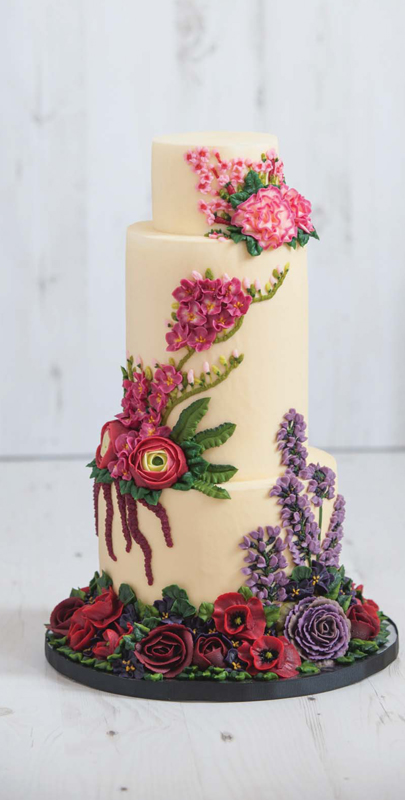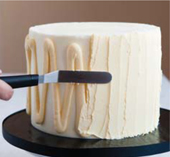
1. After crumb coating your cake, chill it for 10 to 15 minutes or until the first coating of buttercream is firm. Then apply another layer all over the surface of the cake. Spread the buttercream evenly and take off any excess.
The astonishingly rich variety of flowers that tumble down the sides of this cake are certain to impress. Reds, purples, pinks and violets combine to dizzying effect. The clean lines of the ultra smooth background are the perfect backdrop to all that abundance of flora!

1. After crumb coating your cake, chill it for 10 to 15 minutes or until the first coating of buttercream is firm. Then apply another layer all over the surface of the cake. Spread the buttercream evenly and take off any excess.
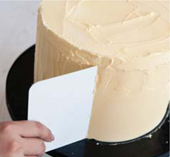
2. Run the scraper around the cake to get rid of any excess and leave an even thickness of buttercream all over your cake.
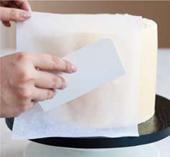
3. Leave to crusts then smooth with a non-woven cloth (interfacing) as follows: put the cloth on the surface of the cake and rub using your fingers and palm until it is nearly smooth. To make it perfectly smooth, use your cake scraper and stroke it up and down, finishing with upward strokes so all the excess will go to the edge of the cake.
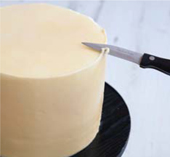
4. Remove all the excess buttercream by cutting through it using a palette knife, a small paring knife or your scraper. Then repeat the smoothing process until the cake surface is perfect.
When covering the cake, make sure to get rid of all the excess buttercream so that you will be able to get sharp edges.

1. Make some amaranthus, bouvardia, ranunculus, roses and ornamental kale (see Flowers) on a flower nail and put them in the freezer (see Freezing). Then pipe all the lavenders, freesias, stems and buds.
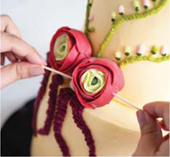
2. Pipe blobs to mark the placement of flowers and to determine their angle. Add the pre-frozen flowers. To reposition a frozen flower without melting it, use two cocktails sticks (toothpicks) poked into the sides of the flower to move it about.
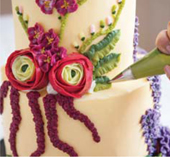
3. Add the flowers in this order: freesias, carnation leaves, carnations, violet leaves, poppies, violets, then pipe leaves randomly to complete the design.
